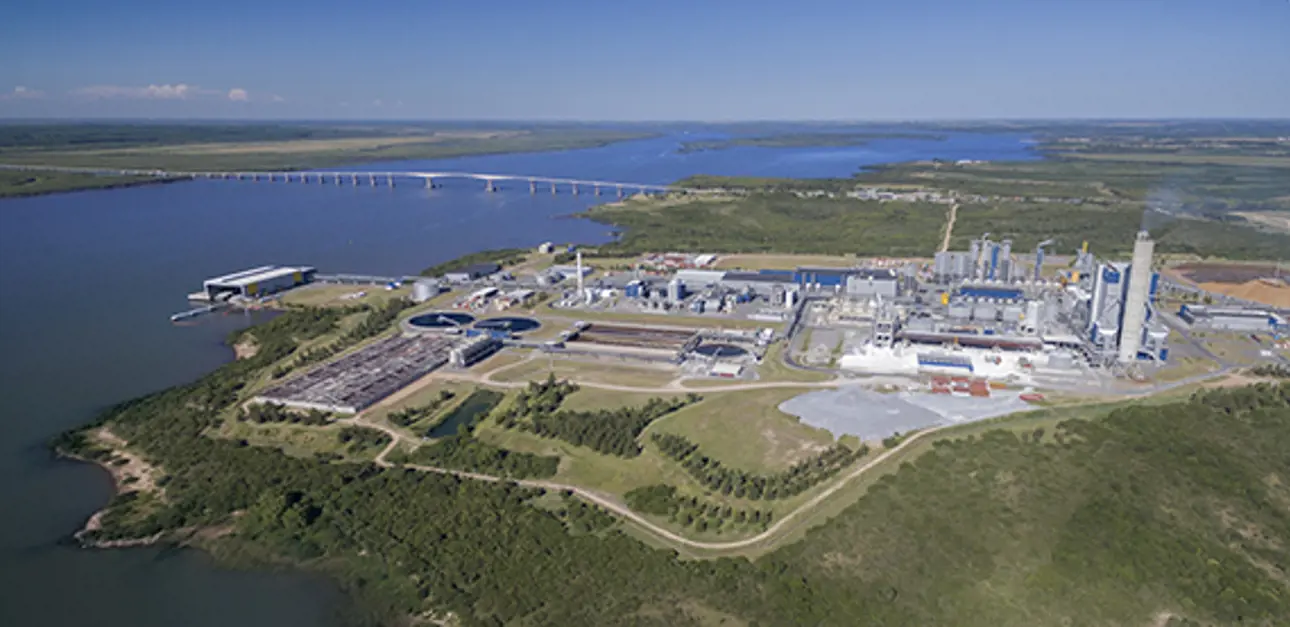UPM Fray Bentos takes advantage of a new Valmet Kappa Analyzer
When UPM Fray Bentos decided to replace its aging Kappa Brite Analyzer after over 10 years of sterling service they again chose Valmet and in 2019 installed the latest online analyzer Valmet Kappa QC.

The UPM Fray Bentos mill, located on the banks of the River Uruguay, produces 1,3 million tons/annum of bleached kraft pulp. The end product, UPM Euca, is a versatile fiber made from plantation-grown eucalyptus. It is used to create clean, soft and smooth tissue products but also provides good surface and optical properties for printing and writing end uses. Quick refinability, high brightness and good cleanliness make it a choice for several specialty paper types.
New measurement opportunities

We wanted the analyzer to identify and measure very small, semi bleached shives which are difficult to detect, even to the human eye. This was a challenge during equipment selection: some analyzers were not able to detect such shives at all. Inés Eluén, Process Manager
Selecting the right analyzer

Gastón Cubas, Development Engineer, takes up the story, “A couple of years before changing the equipment we began evaluating different alternatives available in the market with the focus and interest to monitor shives and fiber morphology. In this sense, we performed a preliminary evaluation of the Fiber & Shives module offered by the Valmet Kappa QC. We sent samples to customer installations in Finland and the results were promising. In addition, we had the opportunity to confirm some valuable mill references of this equipment (one of them in our company) of good performance and reliability for Kappa number and brightness measurements as well as some experience with shive monitoring. When the time came to decide on supplier and technology, Valmet met all our needs and expectations, technically and commercially.”
Kappa, brightness and shive control

Good pre-planning guaranteed a smooth startup
For Inés Eluén a trouble free startup was essential, “Our project team including production, laboratory, R&D and technical department all had the chance to share expectations with Valmet and discuss about the goals at several stages from beginning to end of the project. Based on our request that start-up should be trouble-free for production, significant pre-work was done in order to reduce start-up time requirements. Before sending the analyzer to our site, pre-calibration curves were produced at the Valmet factory with selected pulp samples from our mill. A representative from UPM was able participate and our laboratory team had the opportunity to discuss results and comment on curves.”

Anna Doyenart Rivero, Laboratory Analyst
Installation on the run
“Our project team discussed deeply about the best possible moment to perform installation and start-up and considered that it would be better to start-up the new analyzer during mill stable running rather than at a shutdown. The change was planned one channel at a time, which allowed us to continue monitoring and controlling quality along the rest of the process in the meantime. Valmet supported our strategy and worked together with us. The result of such team work was a very smooth, easy and fast start-up. We did not need to face blind process periods or worry about declassed product or tons of extra laboratory measurements at a rush. Our lab was able to focus its resources on calibration fine-tuning, one step at a time, and production could trust the results from the analyzer almost from the beginning,” reports Eluén.
High availability

Further insights
“Compared to laboratory measurements, the analyzer provides far more data and quicker feedback regarding the process. It allows online control of process parameters. The shive and fiber morphology measurements are providing further insights regarding the effects of our raw material and processes on pulp quality. Quality at our mill is at a very good level,” concludes Eluén.
